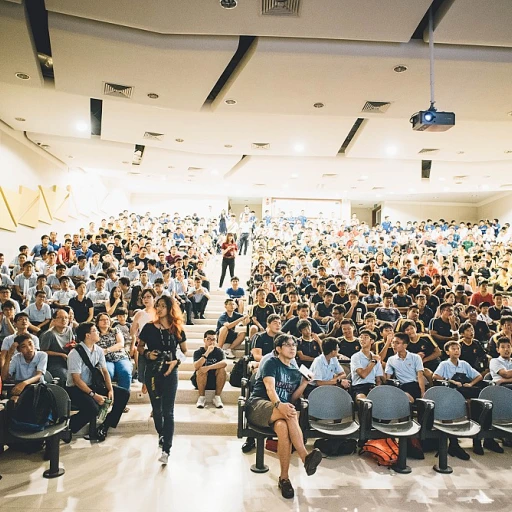The Role of AI in HR Decision-Making
The Intersection of AI and HR Decision-Making
Artificial Intelligence (AI) has become a crucial component in the toolkit of human resource management, transforming traditional processes into more streamlined and efficient systems. In this modern landscape, AI's role in HR decision-making is both profound and multifaceted. Incorporating AI into human resources allows companies to manage vast amounts of data with greater precision and speed. HR professionals can leverage AI to make informed decisions around everything from recruitment to employee discipline, enhancing effectiveness in managing workforce dynamics. AI systems are designed to analyze employee records and assess situations where disciplinary actions might be needed. By effectively interpreting data, AI helps in understanding whether there is just cause for initiating disciplinary measures, such as a discharge or other action, against employees. Moreover, employing AI in these processes enables a more objective view, reducing biases that may arise in human-led investigations. The degree of discipline an employee might face can be supported by substantial evidence collected and analyzed by AI, ensuring that any disciplinary action taken is grounded in objectivity and fairness. While AI offers these potent capabilities, it also poses challenges. Balancing the insights AI provides with the need for human judgment is essential to ensure justice and equity in workplaces. Implementing AI in HR requires awareness of not just technical capabilities but also the ethical implications involved in decisions impacting employees. For more insights on how AI can enhance professionalism in HR management, consider exploring this link.Defining Just Cause in the Context of AI
Understanding the Principle of Fairness in Disciplinary Decisions
The concept of "just cause" is pivotal when integrating artificial intelligence in human resources, especially when it involves employee disciplinary actions. Just cause ensures that any disciplinary measure taken, such as discharge or other disciplinary action, is based on substantial evidence and proper cause. Incorporating AI into these decisions presents unique challenges and opportunities for employers. When an issue arises, such as an employee violating a rule, the reliance on AI can aid in a more objective evaluation of the situation. However, defining just cause in this context requires a nuanced understanding of both technology and human resource management principles. AI should be used as a tool to help gather facts and evidence. It can assist in identifying trends within employee records, which might offer insights into whether the employee guilty of an offense has a pattern of behavior or whether it was an isolated incident. This investigation process is crucial in ensuring fairness and maintaining the credibility of management. The role of AI extends to maintaining consistency in the application of discipline. It can apply set standards to ensure comparable situations are treated alike, which is essential for both management and cause union perspectives. By doing so, AI can reinforce trust in the disciplinary process. However, it's important to note the limitations and ethical considerations of relying on AI in just cause cases. Human oversight is vital in interpreting AI-generated data to consider mitigating or extenuating circumstances unique to each case. For instance, an employee's personal situation, prior record, and the degree of discipline that should be applied may not be fully captured by AI alone. Aligning AI processes with existing disciplinary policies and adapting them to uphold the principles of due process and fairness is essential. An arbitrator might evaluate whether these AI-driven processes meet the established rule standards and protocols expected from human-led investigations. To gain deeper insights into the role of agentic AI vendors and how they can transform HR practices, a further exploration can be found here. This exploration can provide a broader perspective on how AI is reshaping the landscape of human resources, particularly in disciplinary processes and just cause implementation.The 7 Tests of Just Cause Explained
Breaking Down the Core Structure of Just Cause
In understanding how AI plays a role in ensuring fair and just disciplinary action within HR settings, it's essential to grasp the fundamental principles of the seven tests used to determine just cause. These tests are pivotal for management, disciplinary boards, and union representatives as they assess employee offenses in a manner that is structured and unbiased.- Was the rule or order reasonably related to the orderly, efficient, and safe operation of the company's business? This principle ensures that the rules an employee is expected to follow align with the practical needs and expectations of the company.
- Did the employer adequately inform the employee of the rule or order and the consequences of disregarding it? Employees should be made aware of workplace rules and the repercussions for violating those rules, ensuring a transparent relationship between management and employees.
- Did the employer investigate to determine whether the employee violated the rule or order? Any potential disciplinary action requires a thorough examination of the situation, gathering substantial evidence before concluding.
- Was the investigation conducted fairly and objectively? An impartial investigation serves as the foundation for maintaining trust and credibility, preventing biased decisions.
- Did the employer obtain enough substantial evidence that the employee was guilty as charged? The accumulation of concrete evidence is vital in confirming whether an employee's actions warrant disciplinary measures.
- Was the company's rule or discipline uniform and applied evenly across the workforce? Consistency is key to ensuring that no employee feels discriminated against—a principle upheld by both HR norms and union standards.
- Was the degree of discipline reasonably related to the seriousness of the offense? This considers mitigating and extenuating circumstances, aligning disciplinary action with the severity of the incident in question.
Challenges of Implementing Just Cause with AI
Exploring Obstacles in Applying Just Cause with AI
Implementing the principles of just cause for disciplinary action within AI-driven HR processes is not without its challenges. Here, we delve into some complexities and nuances faced by companies, management, and HR professionals when blending AI with just cause. When an AI system is employed to assess just cause, it must evaluate various tests, such as whether an employee intentionally violated a rule or whether substantial evidence supports alleged offenses. This requires a sophisticated understanding of company policies and standards, which AI may not inherently possess without explicit programming and data input. A major hurdle is ensuring the AI's investigation aligns with traditional procedures, especially when examining an employee's record or considering mitigating extenuating circumstances. The AI needs to differentiate between a justifiable offense and a minor slip-up that may not require stringent disciplinary action. Without this discernment, employers risk disciplining employees unfairly. Arbitrators and union representatives are often involved in cases of employee discipline. Their insights can conflict with AI outcomes, especially if AI assessments lack transparency or fail to account for the union's perspective on proper cause. The key is balancing technology's efficiency with human oversight to uphold fairness and trust in the disciplinary system. AI's capacity to handle disciplinary cases can also be limited by the availability of accurate and biased-free data. AI systems rely heavily on historical data, which, if flawed, may lead to decisions that don't reflect the contemporary workplace environment or union agreements. Ultimately, the degree of discipline applied by AI must reflect the principles of just cause and be supported by thorough and fair evaluation processes. As companies continue to integrate AI solutions in HR, understanding and overcoming these challenges is crucial to ensure that AI's role in determining just cause maintains fairness across the board.Case Studies: AI and Just Cause in Action
Real-World Examples of AI in HR and Just Cause Application
In evaluating the practical application of AI within HR, especially regarding the just cause standard, it's beneficial to examine real-life scenarios. Companies increasingly rely on AI to enhance decision-making processes, from hiring to disciplinary actions. But how do they ensure fairness and adherence to just cause principles?
One noteworthy example comes from a large company in the United States, where AI is utilized to streamline the investigation process for employee misconduct. The AI system helps in gathering substantial evidence and analyzing employee records to determine if there are proper grounds for discipline or discharge. This ensures that the decision to discipline an employee is backed by factual data, mitigating risks of unjust action.
Another case involves a manufacturing firm dealing with repeated rule violations among its staff. Management employed AI to monitor offenses and predict potential rule violations. The AI provided a comprehensive view of rule standard adherence across the workforce, aiding in issuing the degree of discipline that matched the severities of the offenses identified. Importantly, this approach maintained transparency and aligned with union expectations regarding cause tests.
Furthermore, in situations where an employee's extenuating circumstances might be the underlying cause of their performance issues, AI tools have proved crucial. By delving into patterns and incorporating mitigating factors, AI helps determine if the employee is truly guilty of the infractions or if minor breaches are present in their work record.
While the introduction of AI into HR practices poses challenges, such as training HR personnel to interpret AI outputs and ensuring unbiased algorithms, these case studies illustrate that AI can effectively uphold the principles of just cause if implemented correctly. By doing so, companies are not only enhancing their disciplinary processes but also fortifying trust in management decisions among employees and unions alike.






